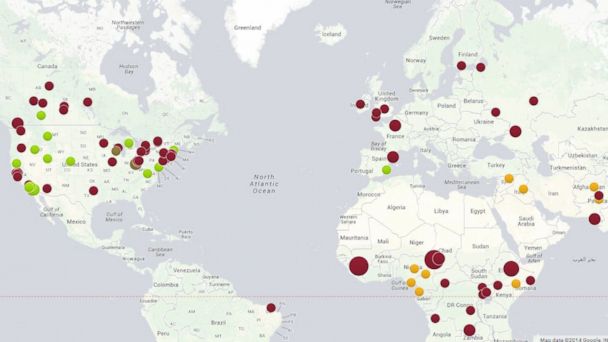Outbreaks Can Happen Anywhere, Even Ohio

Despite near-average vaccination rates, Ohio has seen a surge in mumps and measles cases this year. (Credit: Getty Images)
In many ways, Ohio is pretty average. It has about 51 percent women, 49 percent men. Its state flower is a carnation, and its official beverage is tomato juice.
But while 90.3 percent of Ohio's children have received the MMR vaccine - a number on par with the national average - the state is seeing a surge in measles and mumps.
Why? Experts blame international travel and a bit of bad luck.
"People from all walks of life and all continents … are moving left, right and center around the world every day," said Dr. Frank Esper, an infectious diseases expert at UH Rainbow Babies and Children's Hospital in Cleveland, Ohio.
While having a high enough vaccination rate can lead to herd immunity, which limits the spread of a virus and helps protect unvaccinated individuals, Esper said the ability to travel the world has changed the meaning of "herd."
"We can no longer think of our herd as the Ohio herd or as the U.S. herd. We're talking about the herd of the world," he said.
Ohio has recorded 73 measles cases since March 22, which health officials say makes it larger than any other state measles outbreak since 1996. It has also seen 342 mumps cases this year, 201 of which have been linked to an outbreak at Ohio State University.
The Ohio measles outbreak has been tied to unvaccinated people who traveled to the Philippines, which has seen upwards of 26,000 measles cases since January, according to the World Health Organization.
The Ohio outbreak numbers are in the hundreds rather than thousands because so many people are vaccinated, Esper said. The measles vaccine is 99 percent effective, and the mumps vaccine is about 88 percent effective in those who have had two doses of it, according to the U.S. Centers for Disease Control and Prevention.
"If it was up the virus, let me tell you, mumps would spread like gangbusters," he said, adding that the measles would do the same.
Still, Ohio has clusters of people who are hesitant to use vaccines for personal reasons just as affluent communities on the east and west coast do. Ohio also has a large Amish population, some of whom avoid vaccines because of their faith, Esper said.
Many of those who have gotten sick in Ohio have received incomplete doses of the MMR vaccine or skipped it altogether, according to a statement from Ohio's Morrow County Health Department, which is offering vaccine clinics in response to the outbreaks.

This map compiled by the Council on Foreign Relations shows vaccine-preventable disease outbreaks. (Credit: Courtesy Council on Foreign Relations)